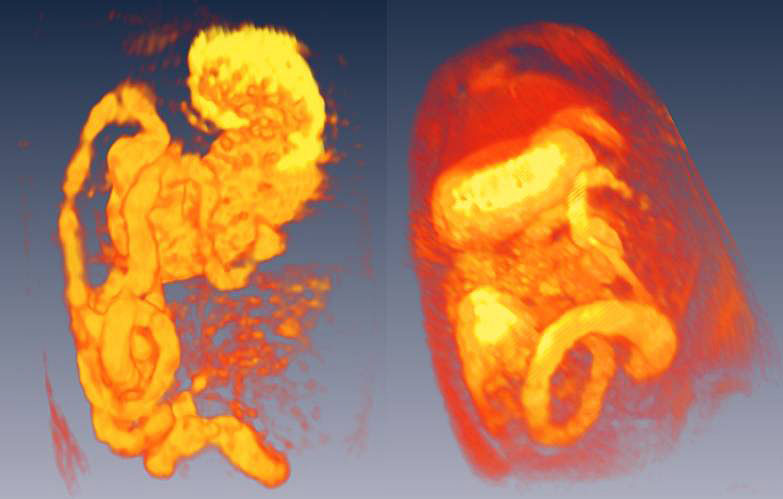Like other WTEC studies, this study was led by a team of leading researchers from a range of simulation science and engineering disciplines and involved site visits to research facilities around the world.
The nearly 400-page, multi-agency report highlights several areas in which the U.S. still maintains a competitive edge, including the development of novel algorithms, but also highlights endeavors that are increasingly driven by efforts in Europe or Asia, such as the creation and simulation of new materials from first principles.
This animation shows the sliprate on the 16 km deep vertical plane along the southern San Andreas fault and the horizontal plane shows the velocity magnitude on the surface. The animation is based on the TeraShake 2.1 simulations. Credit: Visualization: Amit Chourasia (SDSC/UCSD). Simulation: Kim Olsen and Steven Day (San Diego State University); Luis Dalguer (ETH-Zurich); Yifeng Cui and Jing Zhu (SDSC/UCSD); David Okaya, Phil Maechling and Thomas H. Jordan (University of Southern California). San Diego Supercomputer Center (SDSC), Southern California Earthquake Center (SCEC). Acknowledgements: Mahidhar Tatineni (SDSC/UCSD), Geoffrey Ely (SCEC), Krishna Muriki (SDSC/UCSD), Eva Hocks (SDSC/UCSD), Douglas Weimer (SDSC/UCSD), Tommy Minyard (TACC), Karl Schulz (TACC), Dongju Choi (SDSC/UCSD), Tim Kaiser (SDSC/UCSD), Sweta Gupta (SDSC/UCSD)
"The startling news was how quickly our assumptions have to change," said Phillip Westmoreland, program director for combustion, fire and plasma systems at the National Science Foundation (NSF) and one of the sponsors of the report. "Because computer chip speeds aren't increasing, hundreds and thousands of chips are being ganged together, each one with many processors. New ways of programming are necessary.
"Some of the new high-powered computers are as common as gaming computers, so key breakthroughs and leadership could come from anywhere in the world," added Westmoreland. "Last week's research-directions workshop brought together engineers and scientists from around the country, developing ideas that would keep the U.S. at the vanguard as we face these changes."
This visualization illustrates some of the rupture and wave propagation phenomena of a magnitude 7.8 earthquake on the San Andreas fault in southern California ('the BIG ONE'). The animation captures more than 4 minutes of the complex dynamic rupture and wave propagation for such a large event, including directivity effects, wave-guide phenomena, and local amplification of the ground shaking. The visualization presents these physical effects in an intuitive yet accessible manner using a variety of visual representations and several views. 11.8 TB of earthquake simulation output from a state-of-the-art earthquake simulation was used to generate the animation. Credit: Visualization: Amit Chourasia (SDSC/UCSD)
Sharon Glotzer of the University of Michigan chaired the panel of experts that executed the studies of the Asian, European and U.S. simulation research activities. Peter Cummings of both Vanderbilt University and Oak Ridge National Laboratory co-authored the report with Glotzer and seven other panelists, and the two co-chaired the Apr. 22-23, 2009, workshop with Glotzer that provided agencies initial guidance on strategic directions.
"Progress in simulation-based engineering and science holds great promise for the pervasive advancement of knowledge and understanding through discovery," said Clark Cooper, program director for materials and surface engineering at NSF and also a sponsor of the report. "We expect future developments to continue to enhance prediction and decision making in the presence of uncertainty."

Three-dimensional reconstructions of magnetic resonance images of the rat gastrointestinal tract, from the stomach (top) through the small intestines (duodenum, jejunum and caecum). Credit: Thomas Neuberger and Andrew G. Webb , Huck Institute Magnetic Resonance Centre, Pennsylvania State University
The WTEC study was funded by the National Science Foundation, Department of Defense, National Aeronautics and Space Administration, National Institutes of Health, National Institute of Standards and Technology and the Department of Energy.
For more information, read the full report.





Comments